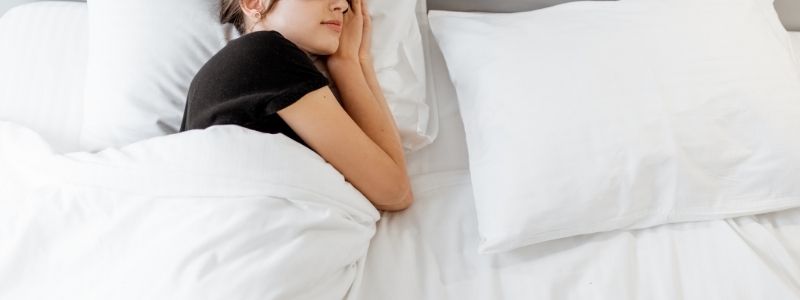Memory foam has an open-cell structure that makes it slow in retaking the original shape once you stand up. When you press your hand into the foam, the imprint stays visible for a few seconds (some companies send out foam samples large enough to see the behavior for yourself).
Many companies use a picture of a hand imprint on a Tempur mattress in their advertising. With the release or shifting of weight, the visco foam constantly and gradually readjusts. But does this happen with all foams?
The ‘dead’ behavior of a memory foam mattress (lack of springiness) starkly contrasts the ever-present return force of conventional foam beds. They constantly push back when the weight is displaced, pushing back hardest when and where the displacement is greatest which causes discomfort.
Memory foam has billions of more cells than any other foam. In fact, there are that many more cells that it’s twice as dense as regular foam. The best quality visco elastic foam is nearly three times denser than regular foam. This is where the added cost to manufacture comes from.
When you see wholesale or discount memory foam so much cheaper than brands like Tempurpedic foam, ask yourself this, how did the manufacturer cut costs?
Mattresses from denser visco foam make more body contact than conventional foam, which in turn makes better body contact than regular mattresses and beds. This is why foam is generally warmer to sleep on (better body contact means less skin is exposed to air in order to cool off).
Visco Memory Foam Is Four-Dimensional
Conventional foams are two-dimensional, with firmness and density being its only two features. Good quality memory foam, however, is four-dimensional with added body-temperature responsiveness and time effects making beds and toppers an entirely different sleeping surface. Take Tempurpedic for example.
The way Tempur foam mattresses react to heat explains their ability to flow around your body and distribute your weight more evenly. Unfortunately, this very ability is also a source of a great deal of comment among consumers and the reason why mattress ratings and bed reviews vary so much.
Sadly for consumers, Tempur-Pedic foam comes at a premium price because of:
- Density – Up to three times more material goes into the making of Tempur foam compared to cheaper alternatives.
- Heat-responsiveness – Not all types of visco elastic foam are responsive to body temperature. Adding this dimension to a mattress or bed makes it more expensive to manufacture.
If you are thinking about buying memory foam, only consider high-density temperature-sensitive visco-elastic foam, but only after carefully considering whether it suits you. Tempur-Pedic mattresses are one of the popular options but there are others too.
I do not recommend buying cheap viscoelastic foam mattresses. They will be either low-density or lacking in heat-sensitivity or both.

